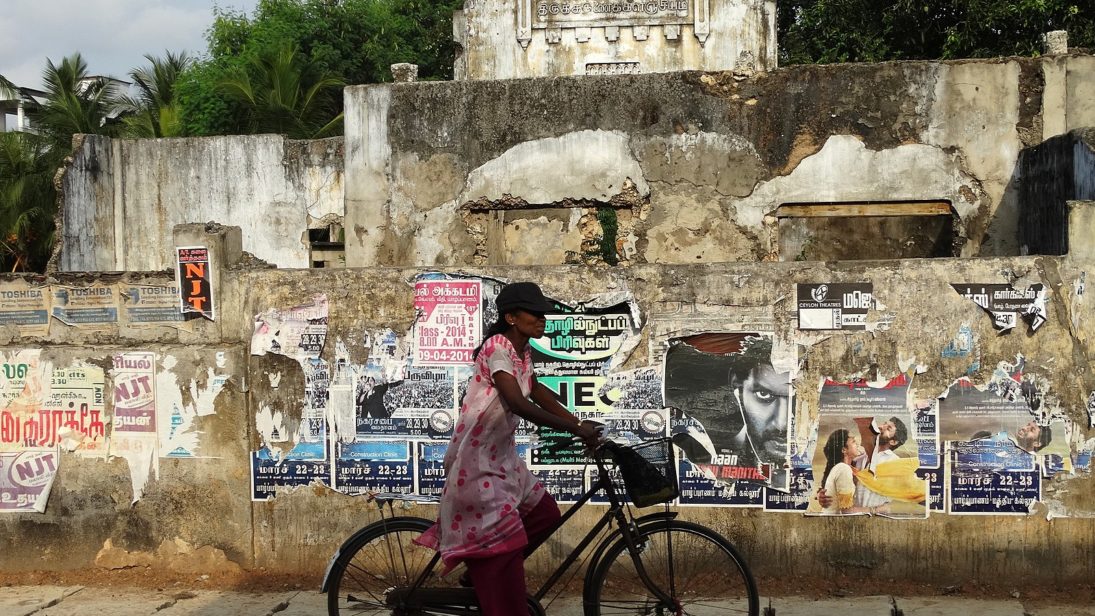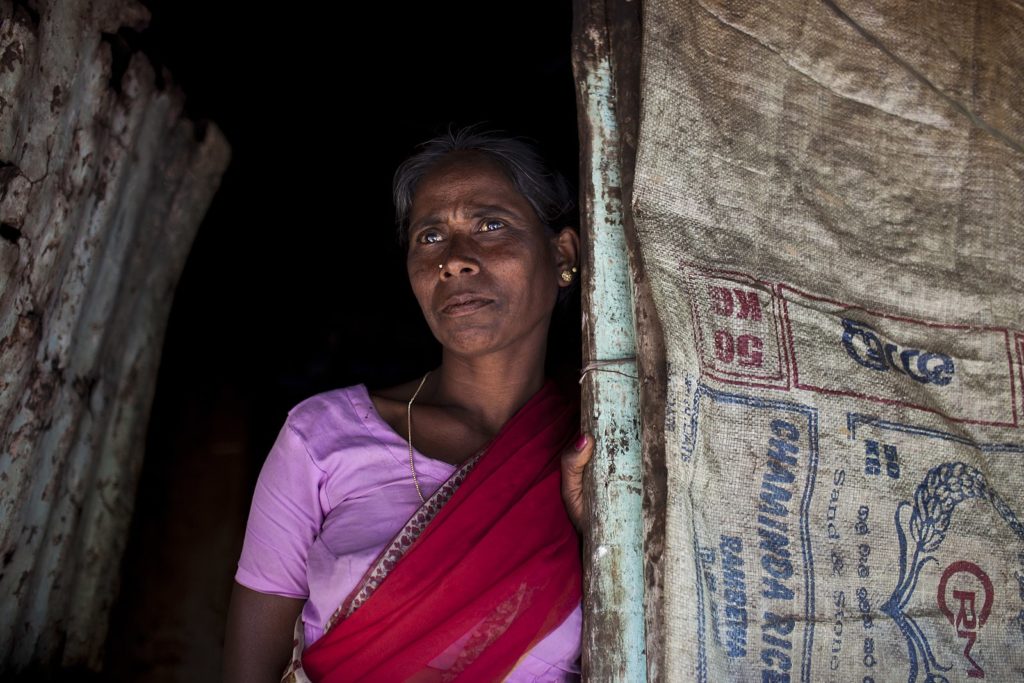
Several countries, including Sweden, Canada, France, and Spain, have embraced the implementation of a Feminist Foreign Policy (FFP), bringing to fruition the conversation around its power to transform realities for women and girls. As the Center for Feminist Foreign Policy describes: “A Feminist Foreign Policy (FFP) is a political framework centered around the wellbeing of marginalized people and invokes processes of self-reflection regarding foreign policy’s hierarchical global systems.” The approach provides an antidote to the current problematic practices of foreign policy and global aid, where decontextualized individually-centered actions are favored over implementing structural and hierarchical change.
Sri Lanka has grappled with a history of violence: the country experienced armed conflict between the Sri Lankan Armed Forces and the Liberation Tigers of Tamil Eelam (LTTE) from 1983 to 2009, and two youth-led insurrections in 1987 and 1991. From the increase in the number of female-headed households, increased vulnerability to sexual harassment and violence, psychological effects including anxiety, depression, economic vulnerability, and more, women continue to contend with the troubled post-war landscape and seemingly insurmountable challenges. Conventional peacebuilding approaches have struggled largely due to their failure to move beyond the inclusion of gender analysis as a “checkbox” activity within a neoliberal paradigm, such as the continued framing of women as “mothers”, “wives”, and “victims.”
FFP can center marginalized and vulnerable populations in this delicate time, addressing the gaps of traditional approaches, and thus, systematically and holistically reframe what transitional justice can look like for Sri Lanka.
The key question is simple: What can FFP offer regarding gender security and women’s roles in a post-conflict transitional justice framework in Sri Lanka? Foreign policy decisions have immense potential to center women and address structural and systemic injustices from a local and contextual framework. The framework also presents an alternative to the white-savior complex often touted by traditional approaches to international aid and challenges the dominant neoliberal underpinnings of international political discourse. FFP can center marginalized and vulnerable populations in this delicate time, addressing the gaps of traditional approaches, and thus, systematically and holistically reframe what transitional justice can look like for Sri Lanka.
Post-Conflict Sri Lanka: The Role of Women and Transitional Justice
Research shows that countries with more gender equality are less likely than other countries to experience civil war, and gender equality is linked with good governance—all pertinent issues for Sri Lanka moving forward. FFP provides an opportunity for Sri Lanka to craft a peacebuilding framework rooted in an intersectional, gendered approach, moving away from the narrative of decontextualized individual empowerment and focusing on systematic, sustainable change.
Applying a gender focus to peacebuilding can still be limited to a patriarchal framework when it lacks intersectionality. A feminist framing was starkly laid bare in the state’s approach to the “rehabilitation” of ex-LTTE cadres after the end of the conflict. Interviews with female LTTE fighters found that they joined the movement to seek self-determination in a society that expected them to conform to rigid gender roles. The state-led reconciliation processes completely bypassed this vital aspect and, conversely, re-entrenched women in these gender roles by enrolling them in courses on cosmetology, arranging marriages, and “family culture.” An application of FFP could have challenged the problematic and patriarchal foundation that grounded these reconciliation initiatives, leading the state to offer education and resources on sexual and reproductive health, skills-building beyond gender stereotypes, and trauma-informed counseling as starting points instead.
The government’s current transitional justice response has also neglected to factor in the post-conflict increase in female-led households. As they navigate a patriarchal society, they find themselves vulnerable to exploitation and abuse in various forms, including economic exploitation by microfinance companies who preyed upon the Government’s flawed policies of mega infrastructure development coupled with credit expansion under the guise of promoting entrepreneurship and empowerment. This has since led to crushing debt traps and a spike in deaths by suicide. FFP can provide the analysis needed to understand the gendered assumptions that drive the targeting of women for microfinance. For example, it can ensure that access to these loans is not done as a stand-alone activity but has efforts to challenge these gendered practices directly integrated into the process and execution.

Women continue to be marginalized and, in many cases, left out entirely on key “national” issues such as security, economic development, and trade, despite these being the most pressing issues on Sri Lanka’s political agenda. Moreover, while the political participation of women as a whole is low, women from ethnoreligious minorities face greater barriers than their Sinhalese counterparts. In the current National Parliament, no Tamil or Muslim woman currently holds a seat, a gap few have addressed. FFP can drive a focus on the lack of space for women to participate from the grassroots level, such as trade unions, labor collectives, etc., in formalized political settings, which the current narrow focus on simply filling a certain number of seats in Parliament fails to address.
In post-conflict Sri Lanka, aid money has been significantly limited to supporting short-term projects of six months to a year, which have “key” mandates that have been formulated with little to no intersectional analysis. Consequently, these projects treat women as a homogenous group without considering their generational, class, caste, race, and religious statuses that significantly impact the issues they grapple with and their experiences. FFP aids the move beyond the “project” cycle approach that most donors employ with blanket analyses of these issues and instead takes on a sorely needed targeted approach of the intersecting systems that facilitates patriarchal systems. For example, a significant issue overlooked by traditional peacebuilding processes is the movements led by the mothers of the disappeared – both from the North and East where the civil war took place and the South, which was the site of the JVP insurrections. To date, very few mainstream peacebuilding processes have been able to support these women, primarily because they are viewed as an “issue” to be solved rather than actors who need to be fully engaged in a long-term way, which is how an FFP approach would frame it.
Conclusion
There is a little doubt about the need for FFP in Sri Lanka and the vast potential to transform the realities of the most vulnerable. However, it is the process and content that need our focus and caution. Moreover, a FFP in Sri Lanka needs to be specific to the country’s past and current context. As Ambika Vishwanath points out, “the current conversation around a feminist/gendered foreign policy is still largely in small circles in North America and Europe,” often failing to be locally rooted and bring in marginalized voices in an authentic and non-tokenistic way.
We need to go beyond what sounds good on paper and begin doing the complex and often painful work of unpacking power imbalances, and the lack of trust women and girls have in these international policies and processes.
Not addressing these concerns will result in policies and practices that perpetuate the problematic hierarchies and oppression that have weighed down the humanitarian and aid sectors. We need to go beyond what sounds good on paper and begin doing the complex and often painful work of unpacking power imbalances, and the lack of trust women and girls have in these international policies and processes. It is arduous work but work that can begin now and transform lives.
Editor’s Note: Since Sweden announced a Feminist Foreign Policy in 2014, several other nations have also begun this journey, however the conversation and frameworks are largely rooted in western countries. In this series, run jointly with the Kubernein Initiative, contributors from across the subcontinent discuss what it means to have a “feminist foreign policy,” and how this approach could merge efforts in foreign affairs, regional policy and geopolitics, development and women’s empowerment in South Asia. The series asks to what extent countries in South Asia have incorporated a Feminist Foreign Policy approach, and the ways in which a gender-conscious approach may support security, democracy, and diplomacy on the subcontinent. Read the full series here.
***
Image 1: Adam Jones via Wikimedia Commons
Image 2: Australian Department of Foreign Affairs and Trade via Wikimedia Commons


